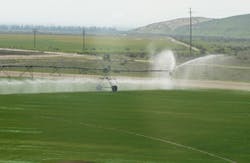IChemE calls for global action to cut water usage in food production
More needs to be done to reduce the amount of water used in food production, according to the Institution of Chemical Engineers (IChemE).
The organization estimates that around 90 per cent of all freshwater is currently used by agriculture (70 percent) and industry (20 percent), leaving just 10 percent for domestic use.
With the global population continuing to rise and more people moving to a Western-style diet, increases in food production will be required to feed the population and that increased production will need larger water supplies.
"Estimates suggest that we will need to produce 60 percent more food by 2050. Agriculture will need around 19 percent more water to produce that extra food," commented Andy Furlong, IChemE director of policy.
"It is clear that current production methods are unsustainable and there are genuine risks of food shortages, rising food prices, droughts and social unrest for future generations unless we make more efficient use of water," he added.
By 2050 around two thirds of the world's population will be living in "water scarce" areas, compared to just 7 percent at present.
IChemE is calling for a global target to cut the amount of water used in food production worldwide by 20 percent. It also wants to see new regulations and incentives introduced to require industry to monitor water usage, with rewards for using alternative and sustainable water supplies.
According to a new report produced by IChemE called 'Water Management in the Food and Drink Industry', the hidden water used to produce food and drinks is as much as 1.8 million litres per person every year — equivalent to an Olympic-size swimming pool. Each person consumes between 2,000 and 5,000 litres of water embedded in their food every day — or between 730,000 and 1,825,000 million litres annually, the organization says.
